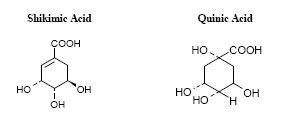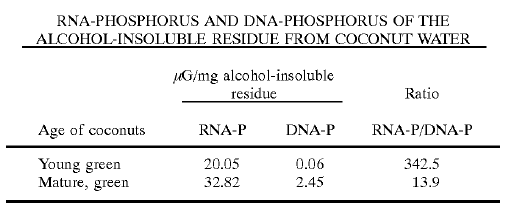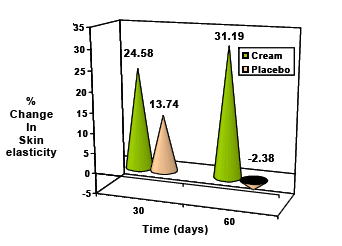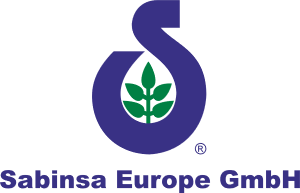Abstract: A proprietary process helps to capture the goodness of green coconut water in convenient powder form that retains the biological activity of its healthful constituents. The ingredient is a convenient nutritional additive to nutricosmetic and cosmetic formulations, and providing natural vitamins, minerals, amino acids and growth factors to support healthy cell growth and hydration of keratinous tissues.
Introduction
Coconut water, the liquid endosperm of green coconuts (Cocos nucifera), is a refreshing beverage, a natural rehydration medium, and is used as a supplement in nutrient media for tissue culture. Because it offers higher amounts of electrolytes such as potassium and magnesium than regular sports drinks, coconut water is known as a "natural isotonic sports drink." Functioning as a prebiotic, coconut water solids support beneficial bacteria in the gut. The endosperm abounds in essential nutrients such as proteins, amino acids, sugars, vitamins, minerals and growth factors, that nourish the growth of the embryo in green coconuts, and therefore potentially support healthy cell growth and metabolism in other living tissues as well.
It is important to differentiate between coconut milk and coconut water. The first is a sweet, milky white cooking base taken from the flesh of a fully developed coconut, while the latter is the liquid endosperm of the coconut. The liquid endosperm is sometimes incorrectly called coconut milk, however this terminology comes from the French term lait de coco. The correct term is coconut water, not coconut milk.
Coconut water composition
The coconut is unique in that it contains large amounts of liquid endosperm for a year or more of its life. The largest quantity of the liquid endosperm, coconut water is however contained in young green coconuts, and it delivers vital nutrients for sustained development of the solid endosperm (coconut meat) found inside the fruit.
At the completion of growth, the solid endosperm and the last of the coconut water provide nourishment for the forming embryo and seedling. Thus, coconut water serves the role as a reservoir of nutrients to support tissue growth (Tulecke, et. al; 1961).

The liquid is rich in proteins, amino acids, sugars, vitamins, minerals and growth factors (Table 1) with pivotal roles in supporting tissue growth. Shikimic acids and quinic acids have been found in extracts of coconut water obtained from fruits at various stages of development, with the greatest amounts being found in young, green coconuts. These alicyclic acids participate in aromatic biosynthesis, and are therefore significant in the growth and development of the budding coconut. These compounds along with identified cytokinins also play an important role in the nourishment and growth of plant and animal cells.
| COMPOUND | Mg/L |
| Nicotinic acid | 0.64 |
| Pantothenic acid | 0.52 |
| Biotin | 0.02 |
| Riboflavin; | 0.01 |
| Folic acid | 0.003 |
| Thiamine | Trace |
| Pyridoxine | Trace |
| Auxin | 0.07 |
| Gibberellin 1,3-Diphenylurea | 5.8 |
| Sorbitol | 15.0 |
| M-inositol | 0.01 |
| Scyllo-inositol | 0.05 Mg/100g |
| Potassium | 312.0 |
| Chloride | 183.0 |
| Sodium | 105.0 |
| Phosphorus | 37.0 |
| Magnesium | 30.0 |
| Sulfur | 24.0 |
| Iron | 0.10 |
| Copper | 0.04 |
| Table 1. Vitamins, Growth Promoters, Sugar alcohols, and minerals in coconut water (Tulecke, et al.; 1961) | |
The amount of RNA-phosphorus (RNA-P) in coconut water was discovered to be consistently high in green coconut water (Table 2, Tulecke, et al.; 1961). The role of RNA in amino acid transport and respiratory metabolism of living cells is well known. The RNA of coconut water would therefore efficiently support the metabolic mechanism vital to the budding endosperm tissue of the coconut, and sustain the growth of other living cells as well, in tissue culture.
Table 2: RNA-P to DNA-P ratio

Coconut water has been used in the tropics as a nutritive and rehydrating agent to restore electrolyte balance in cases of diarrhea (Adams, et al.; 1992). A published research report mentions that coconut water can be used as a short term intravenous (IV) fluid (Campbell-Falck , et al.; 2000). Other reported applications include use in total parenteral nutrition (TPN) (Petroianu, et al.; 2004), and sports beverages (FAO, 1998).
Coconut water is described as an isotonic sports beverage. A comparison of coconut water with regular sports beverages is presented in Table 3 (FAO, 1998).
| Component | Sports drinks (mg/100 ml) |
Coconut water (mg/100 ml) |
||
| Potassium | 11.7 | 294 | ||
| Sodium | 41 | 25 | ||
| Chloride | 39 | 118 | ||
| Magnesium | 7 | 10 | ||
| Sugars | 6 | 5 | ||
| Table 3. Sports drinks vs. Coconut water | ||||
Since coconut water solids can support cell growth, coconut water may be used in products to support the growth of human tissues such as hair follicles. Coconut water can therefore be used in revitalizing preparations for the care of skin, hair and nails.
Formulating cosmetics and nutricosmetics containing coconut water solids:
A proprietary lyophilization process produces a stable composition of coconut water with its inherent biological activity preserved (European Patent No. 1341547, US Patent No.7,300,682 ). The process is designed to produce an amorphous solid, which is easy to work into food and personal care formulations. Protein components and environment sensitive actives are protected by the amorphous nature of the solid, during subsequent processing. During storage, the material changes to the more stable, less hygroscopic, crystalline state.
In preparing the proprietary lyophilized composition CococinTM 1, green coconuts are harvested at the right stage of maturity to guarantee optimal content of RNA and growth factors, including shikimic acid, quinic acid and indole-3-acetic acid, essential vitamins, amino acids, and minerals. The time of harvest is very important as there are significant differences in the nutritional composition of young and mature coconut water (Table 3).
| Mature Coconut Water | Tender Coconut Water | |
| Total solids% | 5.4 | 6.5 |
| Reducing sugars % | 0.2 | 4.4 |
| Minerals % | 0.5 | 0.6 |
| Protein % | 0.1 | 0.01 |
| Fat % | 0.1 | 0.01 |
| Acidity mg % | 60.0 | 120.0 |
| pH | 5.2 | 4.5 |
| Potassium mg% | 247.0 | 290.0 |
| Sodium mg% | 48.0 | 42.0 |
| Calcium mg% | 40.0 | 44.0 |
| Magnesium mg % | 15.0 | 10.0 |
| Phosphorous mg% | 6.3 | 9.2 |
| Iron mg% | 79.0 | 106.0 |
| Copper mg% | 26.0 | 26.0 |
| Table 3: Analysis of Mature and Tender Coconut Water | ||
Source: Satyavati Krishnankutty (1987) (http://coconutboard.nic.in/tendnutr.htm)
The proprietary freeze dried coconut water solids blend seamlessly with dry products, and readily dissolve in water. Cococin™ is thus The Nourishment Factor®2 that provides a valuable nutrient pool for enhancing “nutricosmetic” foods and beverages, as well as cosmetic product formulations.
Clinical study showing the efficacy in reducing the appearance of skin aging:
22 females in good health of ages 20-35 years old were subjects in a double blind placebo controlled clinical study (Research Report Sami Labs Ltd., 2005). A cream containing 1% coconut water solids (CococinTM INCI: Cocos nucifera (coconut) fruit juice, with other natural ingredients) was applied onto the left arm of each subject, and the cream base was applied onto the corresponding area of the right arm, to serve as control. 200 mg of the cream and cream base was applied daily for eight weeks, to the marked areas on the left arm and right arm respectively.
Percent reductions in skin roughness and modifications in skin elasticity were used to evaluate the product. Skin roughness was evaluated using a skin visiometer and dermal elasticity was measured using a cutometer. The percent decrease in skin roughness and change in elasticity effected by the cream and cream base were compared (Figure 1).

Figure 1: Effect of Cococin™ on the parameters of skin aging
The results of the study showed that treatment with the cream containing Cococin™ significantly improved skin elasticity, which was manifested in decreased skin roughness and improved skin tone. Thus Cococin™ nurtures keratinous tissue, and supports tissue integrity, thereby potentially inhibiting the appearance of the signs of aging and the manifestation of wrinkles.
CococinTM can effectively be used for oral and topical applications and serves as a natural pool of nutrients and growth factors that support healthy aging.
Sample "after sun" skin cream preparation formulation:
| Ingredients | % w/w | |
| A | Paraffinum liquidum | 10.0 |
| Petrolatum | 1.5 | |
| Acetylated Lanolin | 2.2 | |
| Lanolin Alcohol | 1.4 | |
| Laneth-10 | 0.5 | |
| Glyceryl monostearate SE | 3.0 | |
| B | Carbomer (Carbopol 940) | 0.1 |
| Sodium hydroxide (10%) | 2.5 | |
| Preservative | 0.02-0.2 | |
| Water (aqua) | qs 100.0 | |
| C | Natural Sesamin Complex | 0.5% |
| Tetrahydropiperine | 0.1% | |
| D | Cococin -Coconut (Cocos nucifera) fruit juice | 2.0 |
Directions:
Blend phase A ingredients maintaining temperature at 80° C. Separately blend phase B ingredients at 80° C. Add phase C ingredients to blended phase A, maintaining the temperature at 80°C, with agitation, and mix the blended A + C with phase B in a homogenizer until thoroughly emulsified.
Adjust the pH to neutral with citric acid solution. Cool to 50° C. Add phase D slowly under homogenization. Cool to desired fill temperature. A sample cosmetic formulation appears in the table below.
7 of 9
Sample Nutricosmetic (Dietary supplement formulation):
| Ingredient | Potential Functions | Quantity |
| Cococin | Hydration, nutritive support | 75 mg |
| Tetrahydrocurcuminoids | Bioprotectant | 75 mg |
| Triphala Extract | Cleansing | 75 mg |
| Ginger Extract | Anti-inflammatory, digestive aid | 20 mg |
| Multi-enzyme preparation | Digestive aid | 30 mg |
| Black pepper extract (Bioperine®) | Bioavailability Enhancer | 3 mg |
Suggested use level: 1 tablet/capsule twice daily with meals
Sample Tangy-Sweet Natural Beverage Premix Formulation:
| Ingredient | Weight % |
| Soluble starch/mannitol/other binder | 62.0 |
| Crystalline/granular Citric Acid | 14.0 |
| Tomato powder | 5.0 |
| Cococin | 8.0 |
| Banana (Musa indica) powder | 6.0 |
| CMC/Xanthan gum | 0.5 |
| Potassium Bicarbonate | 4.0 |
| Potassium citrate | 0.2 |
| Sodium/Potassium chloride | 0.01 |
| Flavors (black pepper/ginger) | 0.4 |
100 g of the mix would yield about 28 servings of 250 ml each
References:
1. W. Tulecke, et al., Contributions from Boyce Thompson Institute, 1961, 21:115-128
2. W. Adams, et al. Trop Geogr Med 44, 149-53 (1992).
3. D. Campbell-Falck , et al. Am J Emerg Med 18, 108-11 (2000).
4. GA. Petroianu, et al. J. Trace Elements in Experimental Med. 17, 273-82 (2004).
5. T. Kuberski , et al., N Z Med J. 90, 98-100 (1979).
6. FAO: Agriculture 21, New sports drink: coconut water. October 1998
7. Majeed, M and Badmaev V. Coconut Water and Its Method of Preparation. EP1341547
8. Coconut and health- a literature review. Secretariat of the Pacific Community 2003.
http://www.spc.org.nc/Lifestyle/frames/links/Detailed%20coconut%20-%20final.doc
9. Sami Labs Ltd. Research Report, unpublished. (2005)







